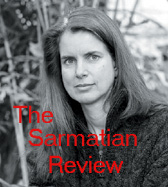| This Issue | Back Issues | Editorial Board | Contact Information |

Songs from a Lead-Lined Room: Notes-High and Low-From My Journey Through
Breast Cancer and Radiation
Reviewer: Bogna Lorence-Lot
By Suzanne Strempek Shea. Boston: Beacon Press, 2002. 208 pages. Hardcover. $23.00 ($16.10 on Amazon.com).
In Songs From a Lead-Lined Room, Suzanne Strempek Shea tells the story (presumably hers) of a woman with breast cancer. We first meet her following surgery; accompany her through radiation; and are left by her when she has completed treatment. In-between, we get to know her, her world, family, friends, and thoughts through a cornucopia of emotions, observations, reminiscences, attitudes, and commentaries, directed at both the world she has known, and the new one--of medicine and fellow patients. Despite her vulnerability, she fends off help from family and friends. Nor does she choose to immerse herself in a hobby, think positively, or follow any other stale aphorism offered by popular culture. Finding herself in a new dimension, she favors those who understand her desire not to be categorized and ministered to; she prefers to be left alone. As example, we hear about a friend who does not expect anything ‘normal' from her; buys her a doormat reading "Go Away;" leaves it in the doorway, and scurries away.
Her previous relationship with nature remains the one constant in a changed reality. She feels privileged to have access to its bounty repaying it, at the least, by picking up litter on her walks, and taking it home. As for the rest, the unstoppable dialogue of this intelligent mind, combined with a reporter's acuity, working in a time of stress, is the text offered to the reader. This is not a self-absorbed story; the illness does not take over her life. In the midst of a personal drama, there is constant space for her funny, speculative, philosophical, or simply descriptive, narrative. Striking above all is the originality of her perceptions; likening the face of a student nurse to that of a good-looking religious statue, or wondering about apparel appropriate to a friend's divorce proceedings.
Amazing to say, this is a story without sex, violence, or angst! And amazing to say, it is totally absorbing! This is true of Suzanne Stempek Shea's previous works, which occur in a small conventional town, among unglamorous people, living the quotidian. It may well be that it is the steady population, of succeeding generations who do not need to explain themselves or appear in the media to know they exist that allows Suzanne the luxury of wanting to be alone rather than seeking a support group. She has that if she wants it, without having to introduce and explain herself. Her community knows her.
It takes talent to tell a simple story with such winning originality. So dear reader, do yourself a favor, read this narrative, and the others, but prepare yourself for a fantasy of living in such a town, with such a neighbor!
Back to the September 2002 issue
The Sarmatian Review
sarmatia@rice.edu
Last updated 9/22/02